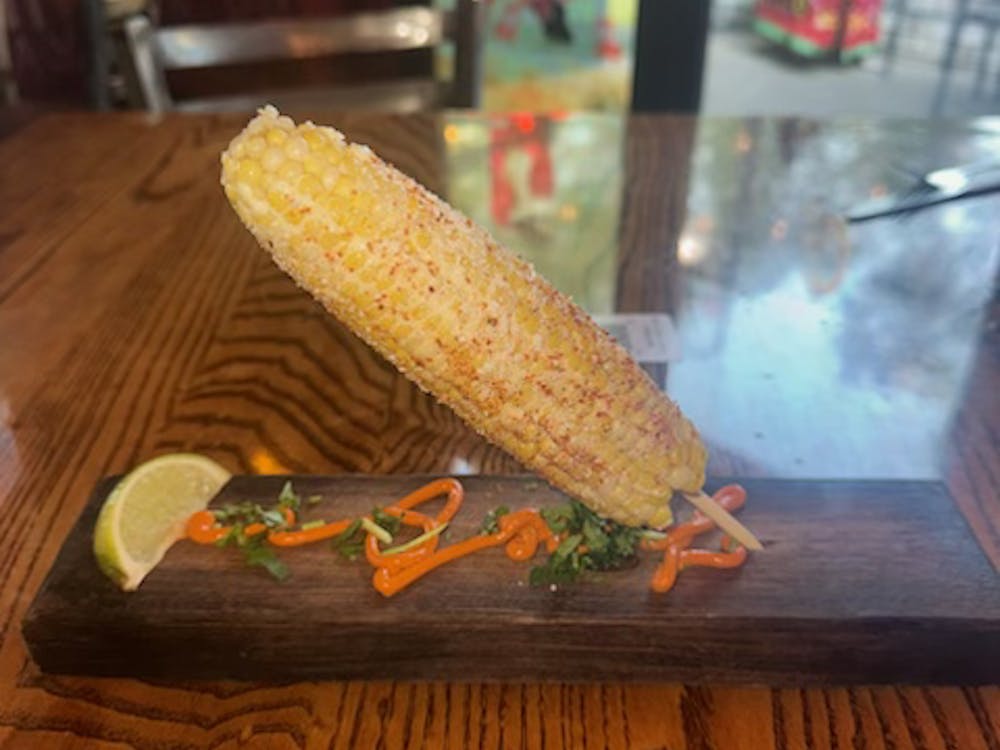There is a place where the skyline of surrounding snow-capped aquamarine mountains is broken only by church steeples and medieval watchtowers. A place where homes are made of slices of sun-baked yellow, brown and red walls. It is home to some of the best art, history and gelato the world has to offer.
Welcome to Florence.
During Winter Break I had the chance to visit this city as part of the January Term course and trip, ARTH 335Z, “Renaissance Art on Site.” For about a week and a half I — and about 40 other University students — spent days touring cathedrals, studying sculptures and exploring quaint streets. For me, the trip had a good deal of personal significance because unlike the majority of other students on the trip, I was not an art history major and had little prior knowledge of art or architectural history outside of Art History 101. Being a travel addict, I had visited Europe several times before for other reasons but had never gotten a chance to access or appreciate fully the artwork its cities have to offer. Going on the J-Term trip to Florence was a way for me to travel with a focus on art and art history. In that way, I saw the city through new eyes.
Class began early in the morning, and we would meet our professors on site for lecture, where we would stand for hours examining aged chapel frescoes or exquisite exterior arches of various buildings. The afternoons were our own to use for outside studies and exploration, so we would flock to various museums and historic sites, making sure to see Michelangelo’s famous David on display in the Galleria d’Accademia and even climbing up a long hill to the old monastery of San Miniato, which has one of the best views of the city.
When we were not in lecture, taking notes or writing journals, my classmates and I would enjoy some of the culinary delights that are a natural part of the city’s culture. For a few euro we would enjoy piping-hot paninis, freshly cooked pasta, hand-tossed pizza, a bowl of cool, sweet gelato or even a fabulous Florentine steak after a long day of class. We bonded over long, delicious meals and bottles of sweet Tuscan red wine, all of us complaining about the cold winter weather and laughing about the events of the day.
Beyond the culinary delights, Florence is a place that is meant to be explored. In less than 30 minutes, you can walk from the courtyard of the Santa Maria Novella cathedral in the northern part of the city to the side of the old bridge, Pointe Vecchio, which straddles the picturesque Arno River to the south of the Duomo. By then, you will have literally crossed the entire city, passing old palaces, watchtowers, markets and even the Duomo itself in your path. In fact, it’s nearly impossible to get lost in Florence because the city is fairly flat, and one can see the Duomo’s huge red dome from literally every corner of the city.
My first afternoon in Florence I decided to go exploring before class, and after walking for more than an hour and wandering some of the curving side streets that give Florence its charm, I realized I had walked outside the limits shown on my map and had absolutely no clue where I was. After a brief moment of panic, I looked up the next street and was greeted by the sight of the Duomo itself. Filled with relief, I plunged back in that direction and ended up in the heart of the city 15 minutes later.
Florence is also a city of color. From the bright purple fleur-de-lys, the city’s trademark symbol, to the rainbow spread of gelato flavors that tempt passersby from behind the windows of chic cafes, Firenze is a sensory adventure. Just one visit to the markets of San Lorenzo will quickly prove this. In the shadow of the plain-faced San Lorenzo basilica, which was commissioned by the de Medici family in the 15th century and entirely completed except for its outer façade, street vendors’ carts crowd the narrow street and provide enough goods to make that neighborhood a shopper’s haven. Scarves of every imaginable color, shape and design flutter in the chilly winter breezes alongside rows of purses, wallets and stationary kits. Sturdy Italian men in jeans and slicked-back black hair call out to passing shoppers, inviting them to come and try on a leather jacket or a new size of belt (“almost free!” one of the jacket vendors would call to my friends whenever we passed by, adding with a wink, “free Italian boyfriend included!”). Among the smell of roasting chestnuts or sweet waffles fresh off the griddle, the lines of time begin to blur as church bells ring across the city. Standing beside an old de Medici palace or churches that are at least twice the age of the United States, it is clear that the past is very much a part of the city’s present.
Even now when I close my eyes I can picture the inside of Santa Maria Novella, my favorite cathedral, and feel like I am there again, with the cobblestone street beneath my boots and the blue skies of the Tuscan countryside above my head.
To anyone who has ever considered visiting or studying Florence, I would say, “Go!” — Firenze is waiting.






